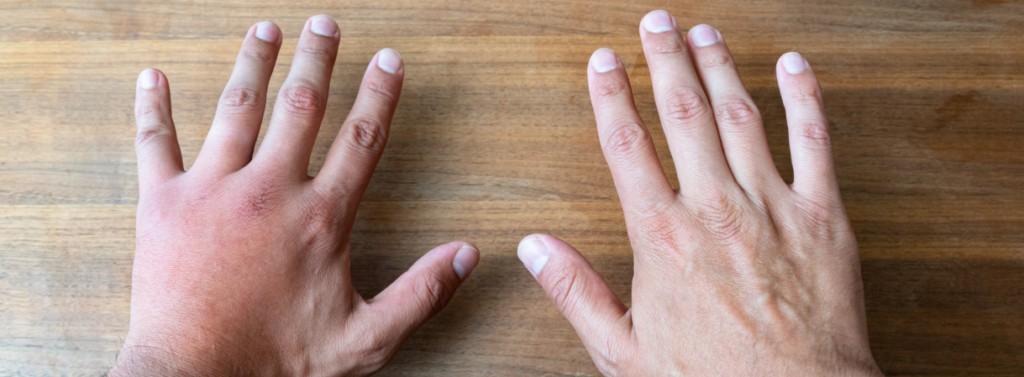People who are involved in accidents rarely fail to seek medical treatment when their injuries are obvious, and they rarely file soft tissue injury claims.
Head trauma and broken bones send thousands of people to the hospital after they have been involved in a vehicle collision or even a slip and fall accident. What about the injuries we don’t see, the internal injuries, or the injuries that don’t leave a visible mark? What happens when someone suffers a soft tissue injury?
It’s not unusual for people to ignore the symptoms of a soft tissue injury, thinking the injury will heal on its own. While this is true in minor injuries, those that are more severe require medical attention if the victim hopes to recover properly. While common opinion may be that all soft tissue injuries are simply those that will heal properly on their own given enough time, it is not the case in all instances. Here is what you need to know about these types of injuries.
What is a Soft Tissue Injury?

A soft tissue injury is diagnosed when there has been overuse or trauma to muscles, tendons, or ligaments. Most of these injuries result from a sudden uncontrolled or unexpected movement. For example, a person may step off of a curb and roll their ankle. In more severe cases, a person may be involved in a vehicle collision and strike their body against an object in the car.
Soft tissue injuries don’t always occur as a result of trauma. In some cases, these injuries occur as a result of overuse or fatigue. Perhaps a runner continues on despite muscles that have already been pushed to their limits. A worker may move in the same way every day and experience an injury due to overuse of that area of their body. These types of soft tissue injuries can be just as serious as those sustained due to some type of trauma and absolutely deserve some sort of filing of soft tissue injury claims.
Sprains and Strains
Sprains and strains are similar injuries and are eligible for soft tissue injury claims. A sprain is diagnosed when a ligament in the body is overstretched. A strain is diagnosed when a muscle or tendon is overstretched. Both of these injuries are very common, and they are all given a grade of severity based on a scale.
Grade 1: A grade 1 strain or sprain is mild. There is minimal swelling and there may be mild tenderness.
Grade 2: These injuries are considered moderate. There is a partial tearing of the fibers, there is pain, tenderness, and swelling, and the patient or victim is unable to put full pressure on that area of the body.
Grade 3: Soft tissue injuries given a grade of 3 are the most severe. There is a complete rupture of the tissue, pain and swelling are significant, instability is present, and the patient or victim cannot use the structure involved in the injury.
Symptoms of Soft Tissue Injuries
When a muscle, ligament, or tendon is damaged, it is typical to experience immediate pain. Swelling may occur rapidly or within just a few days. The person may experience stiffness and bruising as well. In the case of a moderate or severe injury, there may be instability to weight-bearing joints. For example, the patient or victim may not be able to use their knee, ankle, or wrist comfortably.
Recovery
How a person recovers depends on their general health, age, and occupation among other indicators. A grade 1 injury typically heals on its own within a week or two. A grade 2 injury may take three to four weeks to fully heal. In the case of a grade 3 injury, medical intervention is necessary to ensure proper healing. A grade 3 injury can take months to heal. Be sure to keep all the documents that your healthcare professional gives you. Medical records will aid in the recovery of soft tissue injury claims and collecting evidence in your case can make all the difference.
Medical Treatment
In most cases, a minor injury will heal on its own without medical intervention. Few people go to the hospital if they are able to bear weight or properly use the affected area of their body. There are symptoms that indicate the need for medical treatment:
- A popping or cracking noise at the time of the injury
- An inability to place weight on or use the injured area
- Deformity or unusual shape
- Bony structures that are painful
- The feeling of pins and needles or general numbness
There are three stages of treatment for most soft tissue injuries. Within the first 72 hours, the area should be protected and kept free of pain. The second treatment is to reduce swelling and stiffness. At stage three, the patient or victim will regain normal function and begin to enjoy the regular activity. People should follow PRICE: protect, rest, ice, compress, elevate.
Avoid heat during the first 72 hours following an injury. It may make the area feel better, but it can increase blood flow and contribute to swelling. Alcohol should be avoided and massage is not advisable.
The Value of Soft Tissue Injury Claims
Settlements for soft tissue injury claims can range from $5,000 up to $1 million. Pain and suffering calculations factor in several unique elements of each and every soft tissue injury claim.
Keep these 2 elements in mind:
– Pain and Sufferings refers to physical injuries and mental stress, as long as these ailments can be traced back to the accident. Your personal injury lawyer will help you take care of that aspect.
– Your suffering is measured on a scale of 1 to 5. Take whichever rating you get and multiply it by your total expenses, and you will get the amount that will often be used for setting compensation for soft tissue injury claims, and for pain and suffering.
So, for example, if your expenses amount to $100,000 and you are rated a 5 on the pain and suffering scales, then your settlement will be close to $500,000.
Any person who has experienced a soft tissue injury in Fort Lauderdale due to an accident may have the legal right to seek compensation for their injuries, lost wages, and more. Reach out to our team of experienced car accident lawyers in Fort Lauderdale for more information or to schedule an appointment for a free case evaluation. We are here for you and your family.

